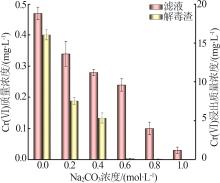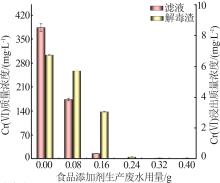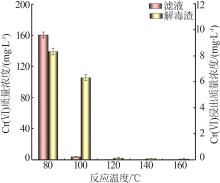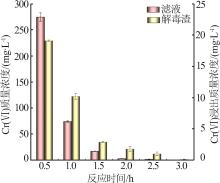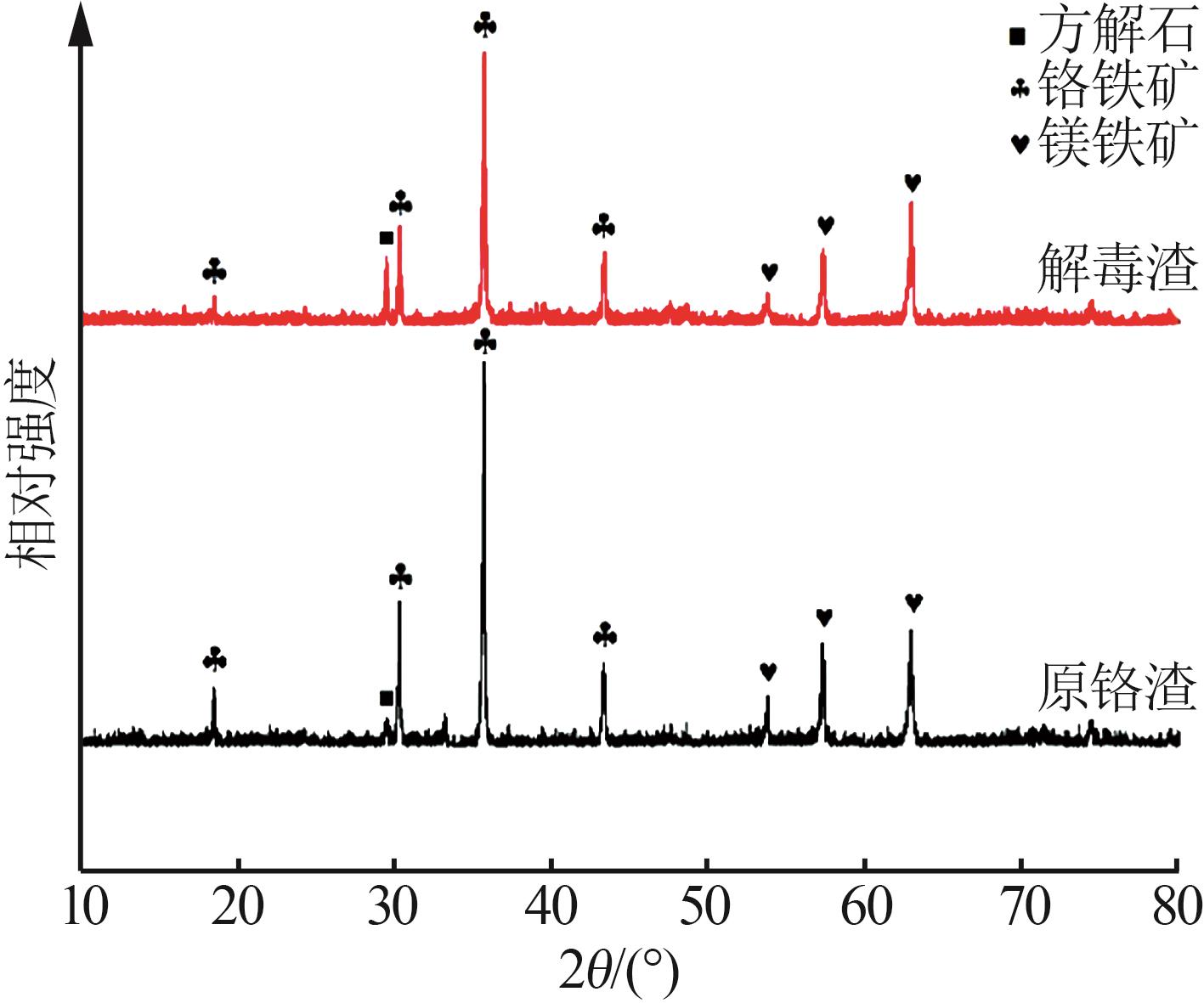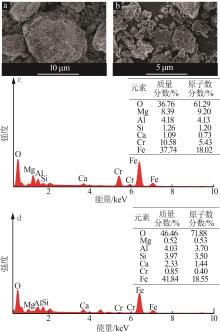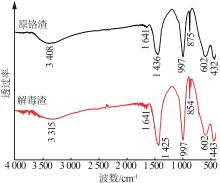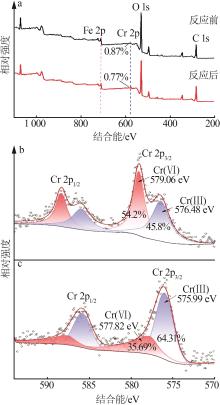| 1 |
蒋子文,全学军,李纲,等.铬渣资源化利用研究进展[J].无机盐工业,2023,55(2):26-35.
|
|
JIANG Ziwen, QUAN Xuejun, LI Gang,et al.Research progress of resource utilization of chromium slag[J].Inorganic Chemicals Industry,2023,55(2):26-35.
|
| 2 |
李玉会,张奇,赖冬麟,等.铬渣污染控制与资源综合利用新技术研究进展[C]//中国环境科学学会2021年科学技术年会——环境工程技术创新与应用分会场论文集(四),2021.
|
| 3 |
田仪娟,晏超群,程治良,等.柑桔皮与铬渣共热解毒六价铬[J].无机盐工业,2021,53(12):129-134.
|
|
TIAN Yijuan, YAN Chaoqun, CHENG Zhiliang,et al.Detoxification of Cr(Ⅵ) from chromite ore processing residue by pyrolysis with citrus peel[J].Inorganic Chemicals Industry,2021,53(12):129-134.
|
| 4 |
PANG Anran, ZHANG Shan, ZHANG Xiaodan,et al.Mechanism of Cr(Ⅵ) bioreduction by Clostridium sp.LQ25 under Fe(Ⅲ) reducing conditions[J].Chemosphere,2024,350:141099.
|
| 5 |
JIN Zhenan, WANG Baoren, ZHENG Feixian,et al.Water/acid/reductive biomass leaching of Cr(Ⅵ) in chromium ore processing residue(CORP) for safe discharge of effluent and to recover Cr(Ⅲ) and gypsum[J].Hydrometallurgy,2023,218:106060.
|
| 6 |
YAN Chaoqun, CHENG Zhiliang, TIAN Yijuan,et al.Adsorption of Ni(Ⅱ) on detoxified chromite ore processing residue using citrus peel as reductive mediator:Adsorbent preparation,kinetics,isotherm,and thermodynamics analysis[J].Journal of Cleaner Production,2021,315:128209.
|
| 7 |
宋瑶.硫酸亚铁还原的铬渣中六价铬的释放机制及提取机理研究[D].广州:华南理工大学,2019.
|
|
SONG Yao.Study on the release mechanism and extraction mechanism of hexavalent chromium in ferrous sulfate-reduced chromite ore processing residue(rCOPR)[D].Guangzhou:South China University of Technology,2019.
|
| 8 |
酆婧轩,李芸邑,师帅,等.硫代硫酸钠、磷酸钠联合处理铬渣中的六价铬[J].中国环境科学,2015,35(11):3333-3339.
|
|
FENG Jingxuan, LI Yunyi, SHI Shuai,et al.Remediation of Cr6+ in chromite ore processing residue by sodium thiosulfate and sodium phosphate[J].China Environmental Science,2015,35(11):3333-3339.
|
| 9 |
WANG Lanbin, XU Yangming, MA Yanping,et al.Detoxification and resource utilization of soda ash chromite ore processing residue by copper slag[J].Process Safety and Environmental Protection,2023,177:752-764.
|
| 10 |
JAGUPILLA S C, MOON D H, WAZNE M,et al.Effects of particle size and acid addition on the remediation of chromite ore processing residue using ferrous sulfate[J].Journal of Hazardous Materials,2009,168(1):121-128.
|
| 11 |
LAN Yingying, ZHANG Lijuan, LI Xiaoqin,et al.Efficient immobilization and utilization of chromite ore processing residue via hydrothermally constructing spinel phase Fe2+(Cr x 3+,Fe2- x 3+)O4 and its magnetic separation[J].Science of the Total Environment,2022,813:152637.
|
| 12 |
YANG Minge, WANG Xuewen, MENG Yuqi,et al.Recovery of chromium from vanadium precipitated solution by precipitation with lead salt and leaching with sodium carbonate[J].Hydrometallurgy,2020,198:105501.
|
| 13 |
ZHANG Bingjie, LAN Weiqing, WANG Zhicheng,et al.Modified chitosan with different phenolic acids:Characterization,physicochemical properties,and biological activity[J].Food Chemistry,2024,441:138337.
|
| 14 |
ZHOU Qi, LAN Weiqing, XIE Jing.Phenolic acid-chitosan derivatives:An effective strategy to cope with food preservation problems[J].International Journal of Biological Macromolecules,2024,254(Pt 3):127917.
|
| 15 |
LEI Qingyuan, ZHOU Kanggen, ZHANG Xuekai,et al.Recycling of spent LiNi x CoyMn1- x-yO2 batteries by a glucose reduction-acid leaching approach:Performance and mechanism[J].Process Safety and Environmental Protection,2023,180:1094-1103.
|
| 16 |
TIAN Hong, WANG Lanbin, XU Yangming,et al.Efficient reduction of Cr(Ⅵ) and recovery of Fe from chromite ore processing residue by waste biomass[J].Environmental Technology & Innovation,2023,30:103046.
|
| 17 |
ZHANG Weifang, ZHANG Peixuan, LIU Feng,et al.Simultaneous oxidation of Cr(Ⅲ) and extraction of Cr(Ⅵ) from chromite ore processing residue by silicate-assisted hydrothermal treatment[J].Chemical Engineering Journal,2019,371:565-574.
|
| 18 |
ŽUŽIĆ A, RESSLER A, MACAN J.Evaluation of carbonate precursors in manganite coprecipitation synthesis by Fourier transform infrared(FTIR) spectroscopy[J].Solid State Communications,2022,341:114594.
|
| 19 |
SUN Qianzhe, LIU Feng, YUAN Yanjie,et al.Cellulose mediated reduction and immobilization of Cr(Ⅵ) in chromite ore processing residue[J].Journal of Hazardous Materials,2020,394:122538.
|
 ), XI Luyao, HE Shuyu, TAN Shanyi, ZHANG Liwen, CHEN Shaohua(
), XI Luyao, HE Shuyu, TAN Shanyi, ZHANG Liwen, CHEN Shaohua( ), DU Yaguang
), DU Yaguang
